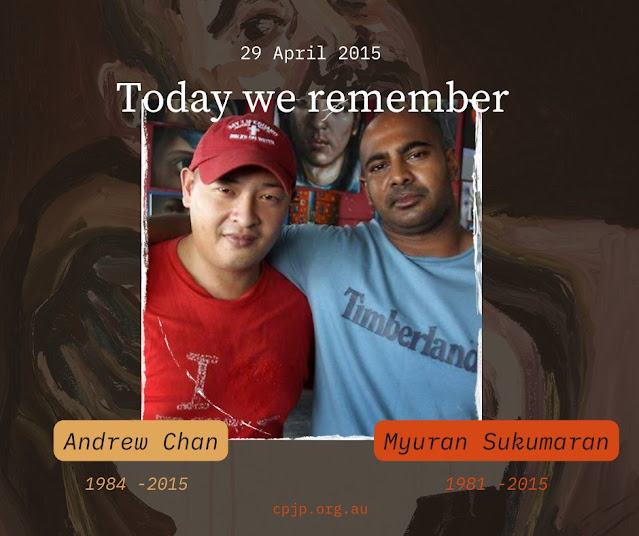The famous appellate judge Richard Posner once wrote, “A civilized society locks up [criminals] until age makes them harmless, but it does not keep them in prison until they die.” The state of Ohio apparently hasn’t heard of Judge Posner, as they went one step further and tried to execute an elderly Alva Campbell and failed.
Ohio’s lethal injection team spent more than 30 minutes poking Alva Campbell’s decrepit body in search of any decent vein into which they could inject their lethal cocktail to no avail. They finally relented — but only temporarily.
Hours later, Gov. John Kasich announced not a commutation — or a plan to investigate what went wrong — but that Campbell’s execution would be rescheduled for 2019.
It’s a travesty of justice that Ohio’s bungled attempt at executing Alva Campbell was both predictable and avoidable. Campbell’s attorneys had in fact informed the governor and courts that their client’s abysmal health made him a uniquely poor candidate for lethal injection.
Campbell has severe chronic obstructive pulmonary disorder, uses a walker, relies on an external colostomy bag, requires four breathing treatments a day, and may have lung cancer. In a medical examination of Campbell before the execution attempt, doctors failed to “find veins suitable for inserting an IV on either of Campbell’s arms.” Ohio’s only answer to the concerns of Campbell’s lawyers was to give Campbell a “wedged shape pillow” to keep him slightly upright through the execution.
It was predictable and avoidable not only because of information furnished to the state by the defense, but because Ohio had already committed a similar bungle in 2009 when it failed to find a suitable vein to execute Rommell Broom after sticking him with needles for over two hours.
“It don’t work. It don’t work.”
The ability to find a suitable vein is basic to lethal injection. When it cannot be done — because of lack of training and qualifications of the lethal-injection team or the health of the prisoner — the process becomes impossible and the risk of a failure or botch undeniable.
The state’s lethal-injection team’s inability to find a suitable vein led to the botched execution of Joseph Clark in 2006, who raised his head from the gurney during the execution to say, “It don’t work. It don’t work.” Ohio persisted, working for another 30 minutes to find another vein before resuming the execution. Media witnesses heard “moaning, crying, and guttural noises” before the deed was finally done 90 minutes after it had begun.
The botched 2-hour execution of Christopher Newton in 2007 also stemmed from the execution team’s inability to access a suitable vein. The state’s botched execution of Dennis McGuire in 2014 has been attributed to the use of midazolam — great if you need a sedative for a medical procedure but unsuitable for executions.
The takeaway should be clear. Ohio cannot be trusted to use the death penalty, as time and time again the state fails and causes needless pain and unconstitutional torture. But Ohio is forging ahead.
The state’s schedule of more than two dozen lethal-injections through 2022 gives Ohio the dubious distinction of maintaining the longest list of upcoming executions in the nation. A second attempt to take Campbell’s life is now set for 2019, while Rommell Broom’s new date is in 2020. Last year, a divided Ohio Supreme Court ruled that Ohio could attempt to execute Broom, yet again, over a powerful dissent pointing out that the U.S. Supreme Court more than a century ago made clear that executions involving “torture or lingering death” would violate the Eighth Amendment.
With its record of three botched executions and two bungled attempts, it’s time for Ohio to stop its unjust assembly line of death. It should reconsider whether it needs to execute prisoners so old and infirm that they can be safely imprisoned until they pass naturally. It should reconsider whether it is even possible to carry out executions without an unacceptable risk of torture or lingering death.
If the state of Ohio actually reckons with this question, they will find the answer to it is no. It is not possible to carry out executions without risking torture or unlawful killing. To paraphrase Joseph Clark’s last words, it just doesn’t work.
Source: aclu.org, November 18, 2017
Pastor joins cause denouncing death penalty
If God could use murderous Saul as Apostle Paul, “Who are we to snuff out the life of someone ... and not give them the chance toward redemption?”
That’s the argument made by the Rev. Jack Sullivan Jr., senior pastor at Findlay’s First Christian Church, in summing up his feelings against the death pentalty.
Another strong argument? Sullivan’s sister, Jennifer, was shot to death in Cleveland 20 years ago in what remains a cold case. And while he’s always been a strong advocate for accountability and retribution, being a survivor of a murder victim, he can’t bring himself to support more bloodshed.
“Rightfully so, we’re angry when people commit murder,” Sullivan says. “The question becomes, what is the best way for us to respond to these horrific crimes, as angry and upset as we may be?”
Sullivan posed this question to crowds of lawmakers, churchgoers and college students as a keynote speaker with this year’s Journey of Hope: From Violence to Healing. The restorative justice organization pairs murder victim family members with death row family members, family members of the executed, people who have been exonerated from death row and activists dedicated to spreading a message of nonviolence and forgiveness.
Sullivan joined the tour for a week this October in San Antonio, Texas, where he repeatedly relived the horror of his sister’s death at just 21 years old.
“Telling the story has put me back in touch with losing my sister. I call her my baby sister - she’s 15 years younger than me,” he says.
While the experience brought back acute memories of loss, it also intensified Sullivan’s conviction for denouncing the cycle of death perpetuated by capital punishment.
“I saw literally the face of death and what gunfire does to a person. And after you’ve seen that you can’t unsee it,” he says.
But while many think the death penalty brings closure and healing to a grieving family, or acts as a deterrent to crime, the pastor dismisses both theories as “mythology on parade,” adding there is no evidence to support either claim. In this Christian country, he believes Americans can and should respond to violence in a more civil, evolved manner.
Life without parole is one alternative, as is life with the possibility for parole. But Sullivan’s strongest push is for “restorative justice,” the concept of putting convicted persons in an environment where they are redirected and rehabilitated, rather than simply thrown away.
Citing a study by the Dayton Daily News, he says Ohio spent $16 million on maintaining the death penalty system in 2014. Rather than using that money to arbitrarily end human lives, Sullivan suggests it could be better spent on prison rehabilitation efforts; programs that put young people’s lives on wholesome paths; increases in police officers, social workers and case workers; and services to assist grieving murder victims’ families.
“It’s (the death penalty) just a hollow instrument of death, whereas rehabilitation uplifts all of us. And redemption uplifts all of us,” he says.
In his advocacy against the death penalty, he’s met some whose minds have been changed and some who are still deciding. And that’s good, he says, as long as people are thinking about the subject and examining their own belief system. Sullivan notes that capital punishment is not a liberal versus conservative issue, as many conservatives view the death penalty as a waste of the states’ resources.
One example, provided by the Death Penalty Information Center, states that enforcing the death penalty costs Florida $51 million a year above what it would cost to punish all 1st-degree murderers with life in prison without parole. A Texas death penalty case costs an average of $2.3 million - triple the cost of imprisoning someone at the highest security level for 40 years.
Further, the center notes that in 96 % of states where race and the death penalty have been reviewed, a pattern of race of victim or race of defendant discrimination emerged.
Sullivan also points out that the death penalty is legal in 31 states, and it’s a conviction often arbitrarily sentenced by juries. Some advocates argue the death penalty is "reserved for the worst of the worst,” he says. “Well, Jennifer’s death was the worst to me."
Source: thecourier.com, November 18, 2017
Execution in Ohio Is Halted After No Usable Vein Can Be Found
Gov. John R. Kasich of Ohio delayed the execution of a convicted murderer for 19 months on Wednesday after an attempt to end his life failed because executioners were unable to find a vein they could use for lethal injection.
The failed execution of Alva Campbell, a 69-year-old inmate with health problems, was the 3rd time in 7 decades that a death row inmate in the United States has survived the initial attempt to take his life and the 2nd time in recent years that it has happened in Ohio, according to The Associated Press.
"Attempts by the medical team this morning to gain intravenous access were unsuccessful," JoEllen Smith, a spokeswoman for the Ohio Department of Rehabilitation and Correction, said in an email.
A warrant of reprieve issued by Mr. Kasich on Wednesday afternoon said the state would try to execute Mr. Campbell again on June 5, 2019. Ms. Smith did not respond to an email asking how the new date had been chosen.
Earlier in the day, Gary Mohr, head of the Ohio Department of Rehabilitation and Correction, told reporters that the state would take its time planning for the next execution attempt.
"We're not going to rush to execute," he said, according to The Toledo Blade. "We're just taking our time and I think that's fine."
An inability to find a usable vein also led to an unsuccessful attempted execution of Romell Broom in 2009; he has remained on death row in Ohio since his execution was called off 2 hours after it was scheduled to begin. He was convicted of raping and murdering 14-year-old Tryna Middleton in 1984.
The 1st modern case of a botched execution attempt happened in Louisiana in 1946 when a malfunctioning electric chair failed to take the life of Willie Francis, 17, a convicted murderer, according to The A.P. The United States Supreme Court allowed the state to make a 2nd attempt, and Mr. Francis was executed by electric chair in 1947.

A reporter for The Associated Press, who was at the Southern Ohio Correctional Facility in Lucasville as a news media witness to the execution that had been planned for Wednesday morning, said the process was called off roughly 80 minutes after it had been scheduled to begin.
Members of the execution team, as it is known, spent about 30 minutes trying to find a usable vein in Mr. Campbell's arms and then tried to find a vein below his right knee.
The executioners tried to comfort Mr. Campbell as they searched for a way to execute him, The A.P. said, by patting him on the arm and shoulder. They also brought a wedge pillow for him to use on the gurney because he has breathing problems related to a longstanding smoking habit.
The A.P. said Mr. Campbell shook hands with 2 guards about 80 minutes into the execution process when it appeared they had successfully found a vein. But 2 minutes later reporters were abruptly ushered out of the viewing area without being told why they had to leave.
Last week, Governor Kasich rejected an appeal for clemency from Mr. Campbell, who was convicted in 1997 of the murder of Charles Dials, a teenager he killed during a carjacking. He used a gun stolen from a Franklin County sheriff's deputy, whom he had overpowered. The Ohio Parole Board said in October that it did not support Mr. Campbell’s request for clemency.
Mr. Broom, whose execution was halted in 2009, has spent the last 8 years arguing that the state should not be allowed a 2nd chance to execute him. In March 2016, the Ohio Supreme Court ruled in a 4-to-3 decision that it would not be unconstitutional for the state to make a 2nd execution attempt. The United States Supreme Court rejected his appeal last December.
Source: New York Times, November 18, 2017
⚑ | Report an error, an omission, a typo; suggest a story or a new angle to an existing story; submit a piece, a comment; recommend a resource; contact the webmaster, contact us:
deathpenaltynews@gmail.com.
Opposed to Capital Punishment? Help us keep this blog up and running! DONATE!
"One is absolutely sickened, not by the crimes that the wicked have committed,
but by the punishments that the good have inflicted." -- Oscar Wilde
















